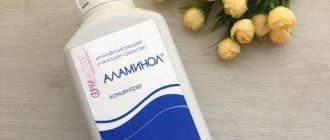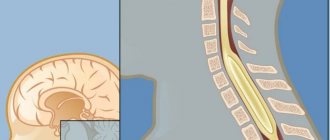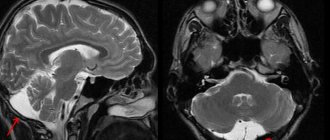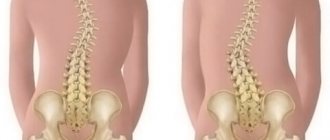Causes of acne
The disease is multifactorial and can occur for many reasons. Among them:
- infection (for example, the habit of frequently touching your face with your hands contributes to skin contamination)
- diseases of the gastrointestinal tract, diseases of the reproductive system
- changes in hormonal levels and hormonal surges (including teenage ones), changing the normal functioning of the sebaceous glands
- metabolic disorders and in particular lipid metabolism
- hereditary predisposition
- additional factors - stress, heat (increased oil production by the skin, as a result), use of inappropriate cosmetics, long-term use of certain medications.
Peculiarities of skin structure and acne development
Human skin is a heterogeneous tissue. It has 3 layers:
- The epidermis is the top layer of skin in contact with the environment. It, in turn, consists of several more layers, the top of which is called the horny or outer layer. It is formed by cells that have lost their nucleus and other organelles and have a strong cell membrane called corneocytes, which are dead keratinocytes.
- The dermis is the middle and most important layer of the skin, which is responsible for all its functioning. After all, it is in it that blood vessels and numerous nerve endings are concentrated. Moreover, it is in the dermis that fibroblast cells are responsible for the tone and youth of the skin, synthesizing collagen and elastin fibers. It also contains sebaceous, sweat glands and hair follicles.
- Hypodermis or subcutaneous fat is the lowest layer of skin, represented by loose connective tissue and fat cells called adipocytes. Its thickness directly depends on the area of the body, gender and nature of nutrition. Therefore, on the face, subcutaneous fat is poorly expressed, but on the hips, especially in women, it is well expressed.
From the point of view of considering the issue of the development of acne, dermatologists and dermatocosmetologists are most interested in the dermis, or rather the activity of the sebaceous glands and other appendages of the skin, i.e., sweat glands and hair. The sebaceous glands are responsible for the synthesis of sebum, also called sebum. It is necessary to retain moisture in the skin, protect it from ultraviolet rays and the penetration of pathogenic microorganisms, and also to bring antioxidants to the surface of the skin and prevent oxidative damage. The functioning of the sebaceous glands is regulated by hormones of the hypothalamus, pituitary gland and adrenal cortex, the work of which is in direct relationship with the activity of other endocrine glands. Therefore, any changes in hormonal levels lead to the functioning of the sebaceous glands being disrupted in one direction or another.
It is to the sebaceous glands that we owe such an unwanted shine to the skin of the face in the so-called T-zone: on the forehead, nose and chin.
Often, hormonal fluctuations provoke more active production of sebum, which is called seborrhea. It is classified as a separate disease, the presence of which can be indicated by:
- enlarged skin pores, including the formation of comedones (popularly called blackheads);
- oily or dry flaking skin;
- rapid contamination of hair, which leads to the need to wash your hair much more often, including daily or even more often.
Hormonal disorders that provoke the development of seborrhea also lead to changes in the composition of sebum. As a result, the content of androgens (male sex hormones) increases and the amount of estrogens (female sex hormones), as well as linolenic acid, decreases. Sebaceous gland receptors are sensitive to androgens. Therefore, an increase in their number provokes more active production of sebum or sebum.
Both men and women produce both androgens and estrogens in their bodies, but in different quantities. Moreover, androgens are precursors of estrogens, i.e., the starting compounds for the synthesis of female sex hormones.
Linolenic acid is responsible for maintaining a slightly acidic environment on the skin, which is an effective prevention of the penetration of pathogenic microorganisms into it. Therefore, when the content of this unsaturated organic acid in sebum decreases, it becomes alkalized. This leads to a decrease in the barrier properties of the skin and the creation of favorable conditions for the development and reproduction of various microorganisms on its surface and penetration from the inside of the skin.
Causes of acne development
Activation of sebum synthesis, changes in its composition, in particular a decrease in the concentration of linoleic acid, is the main reason for the development of inflammatory processes in the skin, i.e., the occurrence of acne.
In the course of research, it was found that acne is most often provoked by:
- anaerobic lipophilic corynebacteria, in particular Propionibacterium acnes;
- aerobic bacteria, including Staphylococcum epidermidis;
- lipophilic fungi Pityrosporum ovale et orbiculare.
The most dangerous from the point of view of acne development are Propionibacterium acnes. These microorganisms are capable of synthesizing a variety of enzymes, including lipase, which destroys the walls of hair follicles.
The main problem is that all these microorganisms are a component of the normal microflora of the skin of the face, i.e. they are constantly present on it and in the normal state of immunity, the activity of the endocrine glands, and metabolism, their number is strictly regulated and cannot cause harm or provoke the development of diseases. Therefore, acne can be a consequence of various disorders in the body, i.e., the influence of endogenous causes, including decreased immunity and hyperandrogenism, i.e., increased synthesis of androgens (testosterone and dihydrotestosterone). Therefore, the disease often occurs when:
- puberty;
- endocrine diseases, in particular diseases of the ovaries and testicles, adrenal glands, pituitary gland and hypothalamus;
- obesity;
- premenopause and menopause;
- hyperkeratosis;
- gastrointestinal diseases;
- suffering from severe infectious diseases;
- long-term stress, chronic fatigue syndrome.
Often the tendency to develop acne is inherited.
But the reasons for the development of acne can also lie in the action of external causes, which include the negative influence of sunlight. This is due to the fact that with active exposure to ultraviolet radiation, the skin's immunity sharply decreases, i.e. its ability to suppress the growth and reproduction of microorganisms living on it. As a result, the bacteria and fungi listed above are able to multiply uncontrollably and form colonies around the sebaceous glands, as they feed on the secretion they produce - sebum.
Acne also often occurs in bodybuilders of both sexes. This is due to the fact that in order to achieve their goals, they are forced to eat high-calorie foods and often take anabolic steroids. Such drugs contain substances that are derivatives of testosterone. Therefore, their use for a long period of time leads to changes in hormonal levels and the development of seborrhea, and then acne. Such cases have even been identified as a separate form of acne - bodybuilding acne.
If women take anabolic steroids, in addition to acne, they may experience a decrease in voice tone, male-pattern hair growth, menstrual irregularities, even amenorrhea. But in both cases, bodybuilders risk decreased fertility.
Pathogenesis
In its development, the disease sequentially goes through a number of stages:
- excessive secretion of sebum;
- the occurrence of follicular hyperkeratosis, which consists of an increase in the thickness of the stratum corneum of the epithelium in the area of the mouths of the hair follicles, which leads to the formation of comedones;
- proliferation of microorganisms in clogged hair follicles, as they feed on the sebum produced;
- an inflammatory process that becomes the body’s reaction to the accumulation of metabolic products of microorganisms (can be observed on the surface of the skin or in its deep layers) and manifests itself in the formation of red papules, pustules, and nodules.
Often, as the duration of the disease increases, the number of inflammatory elements increases. In this, a direct role is played not only by blockage and damage by microorganisms to other sebaceous glands, but also by the rupture of their walls as a result of the accumulation of sebum and its distribution in the thickness of the skin.
Symptoms
Acne can look different depending on the cause and stage of the disease. The main manifestations of acne are:
- open (black dots) and closed (white) comedones on the face: forehead, wings of the nose, chin
- more or less pronounced inflammation (redness) of the skin
- painful rashes, ulcers
- cysts (in the severe stage) – large painful formations under the skin
- hyperkeratosis – excess keratinization of the skin
- spread not only on the skin of the face, but also on the neck, under the cheekbones, on the chest, shoulders and back.
Occupational hazard
The face is almost impossible to hide. Therefore, if the work involves constant contact with harmful substances, the reaction will not be long in coming.
What professions can cause acne? They often appear in cooks who spend a lot of time in the kitchen near a hot stove. Contact with chlorine can cause acne in doctors, nurses, and beauty salon workers.
Constant work outside, especially in rainy and windy weather, such as landscape designers or horse riding trainers, can stimulate the appearance of so-called rosacea.
What to do? Consult with doctors - a dermatologist and occupational pathologist. The first will select the optimal means of protection for the skin, the second will tell you how to properly use personal protective equipment and reduce the influence of harmful work factors.
ONLINE REGISTRATION at the DIANA clinic
You can sign up by calling the toll-free phone number 8-800-707-15-60 or filling out the contact form. In this case, we will contact you ourselves.
If you find an error, please select a piece of text and press Ctrl+Enter
Acne treatment
A dermatologist takes a comprehensive approach to the treatment of acne, influencing all stages of its development and taking into account the stage of the disease and the history of the disease.
- To reduce the amount of fat secreted by the sebaceous glands, hormonal drugs and retinoids are used
- Antibiotics and local anti-inflammatory drugs may be prescribed to reduce inflammation
- means are prescribed to combat comedones, for example, salicylic alcohol.
Acne should definitely be treated. Most often, the advertised cosmetics on store shelves are not enough to get rid of this disease, so the best solution would be to contact a dermatologist. However, do not forget to cleanse your skin daily using special cleansers, which can prevent clogged pores and infection.
Treatment of pustules on the face
There are systemic and topical medications designed to combat ulcers on the face; treatment should be selected by a dermatologist. When making a diagnosis and prescribing therapy, the doctor relies on the clinical picture. As a rule, when pustules appear, combination treatment including systemic antibacterial drugs is required.
For mild to moderate acne, a dermatologist may prescribe medications with azelaic acid, for example, Azelik®5,9 gel. It normalizes keratinization processes, reduces the level of free fatty acids, and exhibits antimicrobial activity against Propionibacterium acnes and Staphylococcus epidermidis5. Azelik® gel reduces the metabolism of neutrophils and their synthesis of free radical forms of oxygen5.
*acne
Forecast
Acne treatment always takes time, so the patient must be patient. During the treatment process there can be both improvements and deteriorations; periods of remission and intensification of the disease alternate. But over time, acne will respond to treatment.
In the absence of timely treatment, acne can progress to a severe stage, in which painful cysts form in large quantities, leaving behind deep scars. In addition, acne can significantly reduce the patient's self-esteem and lead to problems with social communication.
Table of contents
- Etiology and pathogenesis
- Clinical manifestations
- Principles of treatment
Acne (pimples, acne vulgaris, acne, comedones, acne vulgaris) is a chronic inflammatory skin disease that manifests itself as open or closed comedones and inflammatory lesions (papules, pustules, nodules).
In our company you can purchase the following equipment for acne treatment:
- M22 (Lumenis)
- Thermage (Solta Medical)
Today, acne, without exaggeration, can be called the most common skin disease among young people - according to statistics, up to 95% of boys and up to 83% of girls suffer from it. Approximately 60% of them have a mild form with a small number of rashes (so-called physiological acne). If acne occurs in adolescence, in 64% of adults, acne persists at the age of 20–30 years, in 43% at 30–40 years, in 15% at 40–50 years (more often in women).
Recommendations and prevention
Under no circumstances should you open (squeeze) blackheads and pimples yourself. Because of such actions, the infection only spreads across the skin and “goes” into its deeper layers. It can also cause scarring on the skin.
For prevention, it is recommended to cleanse the skin daily with delicate products specifically designed for problem skin, as well as use moisturizing cosmetics with a note that this product does not cause clogging of pores (non-comedogenic - non-comedogenic). It is not recommended to use fatty creams and ointments.
Treatment of acne and pimples with laser
- To relieve inflammation, the modern Fotona SP Dynamis neodymium laser is actively used. Under the influence of laser beam energy, bacteria that produce porphyrin in the epidermal layers of the skin are destroyed by free radical oxygen formed when this same porphyrin is heated. The energy of the neodymium laser kills the bacterial flora and heats the vessels leading to the sebaceous glands, which significantly reduces the production of sebum. Inflammatory elements absorb long waves in the infrared spectrum and, as a result, chronic and acute processes are stopped. Anti-inflammatory laser treatment for acne is fast, effective and virtually painless. Very often, doctors at our clinic combine manual facial cleansing procedures with laser exposure.
- When treating enlarged pores, congestion and age spots with laser, several types of lasers are used: fractional non-ablative (without damaging the skin) erbium laser Palomar 1540, high-intensity light laser IPL Quantum Lumenis. When carrying out such procedures, metabolic processes are launched in the skin tissues, the work of skin fibroblasts is stimulated and, as a result, the synthesis of elastin and collagen is activated, which give the skin good elasticity. In addition, areas of hyperpigmentation are coagulated and lysed. Therefore, as a result of these procedures, not only the relief and color of the skin is evened out, but also its restoration.
- For laser treatment of post-acne (consequences of acne) - various scars, scars, dimples, etc. – laser peels and laser skin resurfacing are actively used with erbium ablative (skin damage) lasers Fotona SP Dynamis and Palomar 2940. The procedures are performed under local anesthesia. After completing the manipulations, a special ointment is applied to the patient’s skin, which protects it from possible injury and infection. The skin heals in 1–6 days (it all depends on the specific procedure performed and its intensity). The end result of such effects is smooth, smooth skin.
The number of laser procedures for the treatment of acne and acne, post-acne treatment, as well as the intensity of laser exposure is determined by a dermatologist in accordance with the Global Acne Severity Scale (GSS).










